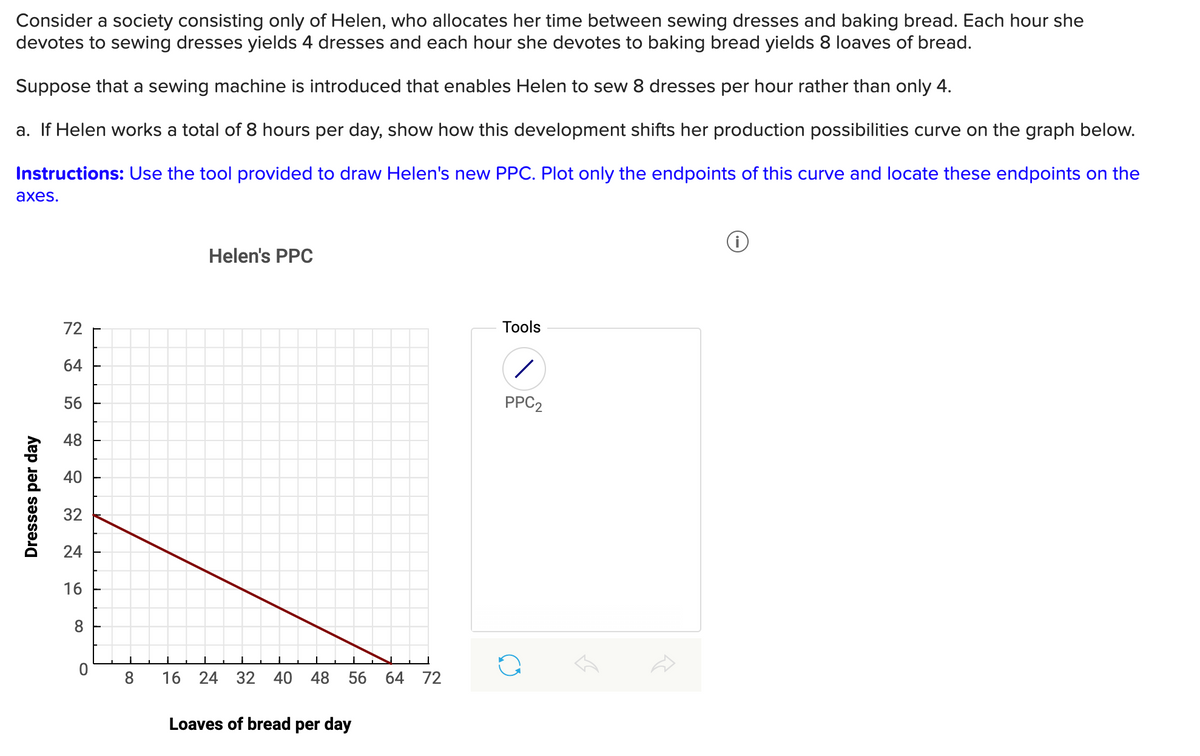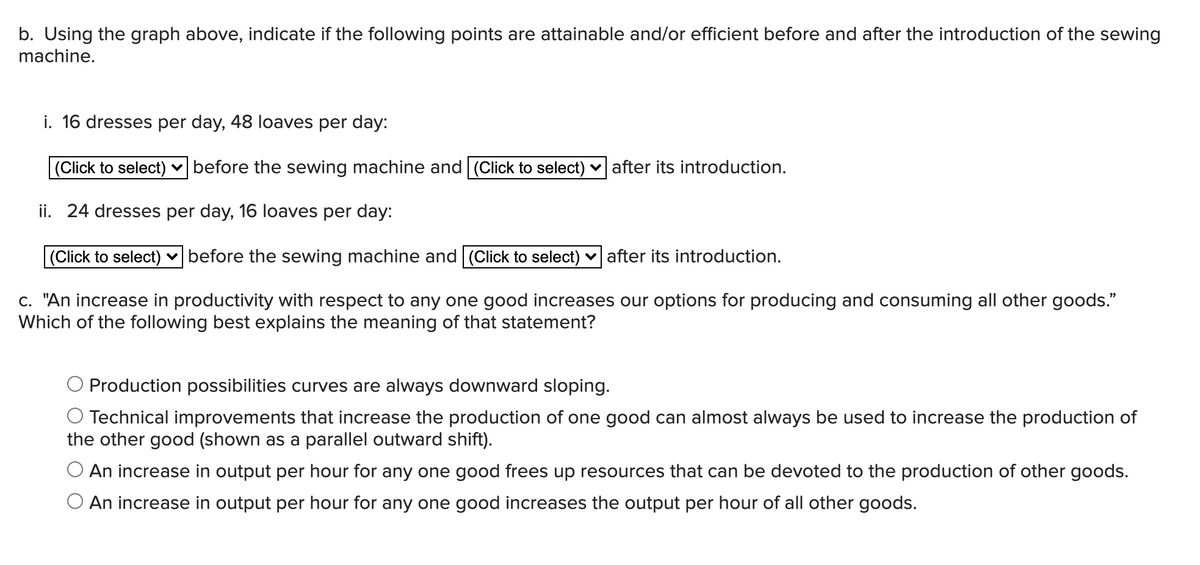Consider a society consisting only of Helen, who allocates her time between sewing dresses and baking bread. Each hour she devotes to sewing dresses yields 4 dresses and each hour she devotes to baking bread yields 8 loaves of bread. Suppose that a sewing machine is introduced that enables Helen to sew 8 dresses per hour rather than only 4. a. If Helen works a total of 8 hours per day, show how this development shifts her production possibilities curve on the graph below.
Consider a society consisting only of Helen, who allocates her time between sewing dresses and baking bread. Each hour she devotes to sewing dresses yields 4 dresses and each hour she devotes to baking bread yields 8 loaves of bread. Suppose that a sewing machine is introduced that enables Helen to sew 8 dresses per hour rather than only 4. a. If Helen works a total of 8 hours per day, show how this development shifts her production possibilities curve on the graph below.
Micro Economics For Today
10th Edition
ISBN:9781337613064
Author:Tucker, Irvin B.
Publisher:Tucker, Irvin B.
Chapter2: Productions Possibilities, Opportunity Costs, And Economic Growth
Section: Chapter Questions
Problem 11SQP
Related questions
Question

Transcribed Image Text:Consider a society consisting only of Helen, who allocates her time between sewing dresses and baking bread. Each hour she
devotes to sewing dresses yields 4 dresses and each hour she devotes to baking bread yields 8 loaves of bread.
Suppose that a sewing machine is introduced that enables Helen to sew 8 dresses per hour rather than only 4.
a. If Helen works a total of 8 hours per day, show how this development shifts her production possibilities curve on the graph below.
Instructions: Use the tool provided to draw Helen's new PPC. Plot only the endpoints of this curve and locate these endpoints on the
аxes.
Helen's PPC
72
Тools
64
56
PPC2
48
40
32
24
16
8.
8.
16
24
32
40
48
56
64
72
Loaves of bread per day
Dresses per day

Transcribed Image Text:b. Using the graph above, indicate if the following points are attainable and/or efficient before and after the introduction of the sewing
machine.
i. 16 dresses per day, 48 loaves per day:
(Click to select) v before the sewing machine and (Click to select) v after its introduction.
ii. 24 dresses per day, 16 loaves per day:
(Click to select) v before the sewing machine and (Click to select) v after its introduction.
c. "An increase in productivity with respect to any one good increases our options for producing and consuming all other goods."
Which of the following best explains the meaning of that statement?
Production possibilities curves are always downward sloping.
O Technical improvements that increase the production of one good can almost always be used to increase the production of
the other good (shown as a parallel outward shift).
O An increase in output per hour for any one good frees up resources that can be devoted to the production of other goods.
O An increase in output per hour for any one good increases the output per hour of all other goods.
Expert Solution
This question has been solved!
Explore an expertly crafted, step-by-step solution for a thorough understanding of key concepts.
This is a popular solution!
Trending now
This is a popular solution!
Step by step
Solved in 3 steps with 1 images

Knowledge Booster
Learn more about
Need a deep-dive on the concept behind this application? Look no further. Learn more about this topic, economics and related others by exploring similar questions and additional content below.Recommended textbooks for you



Exploring Economics
Economics
ISBN:
9781544336329
Author:
Robert L. Sexton
Publisher:
SAGE Publications, Inc



Exploring Economics
Economics
ISBN:
9781544336329
Author:
Robert L. Sexton
Publisher:
SAGE Publications, Inc